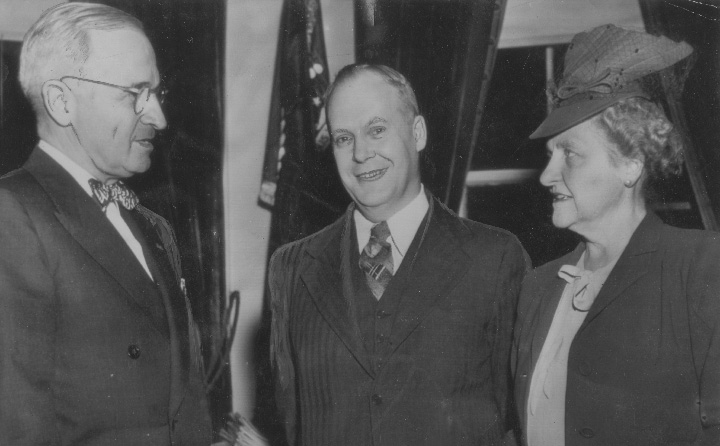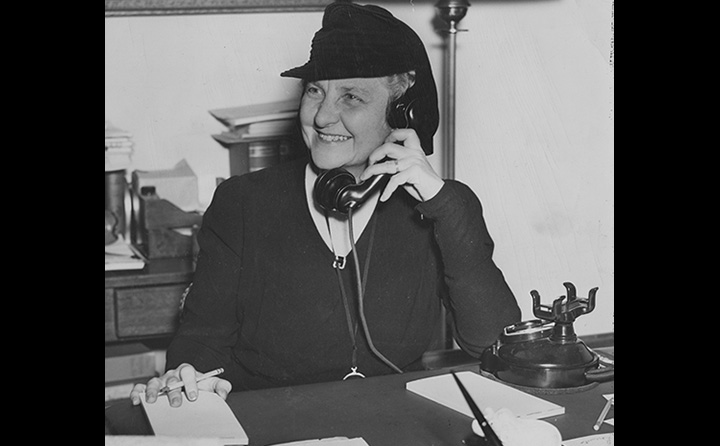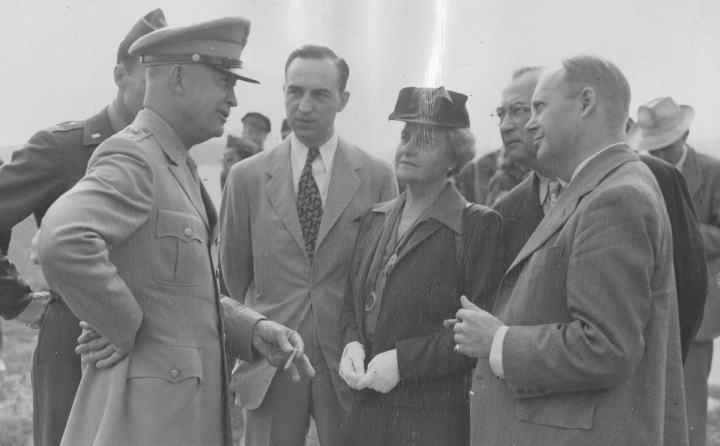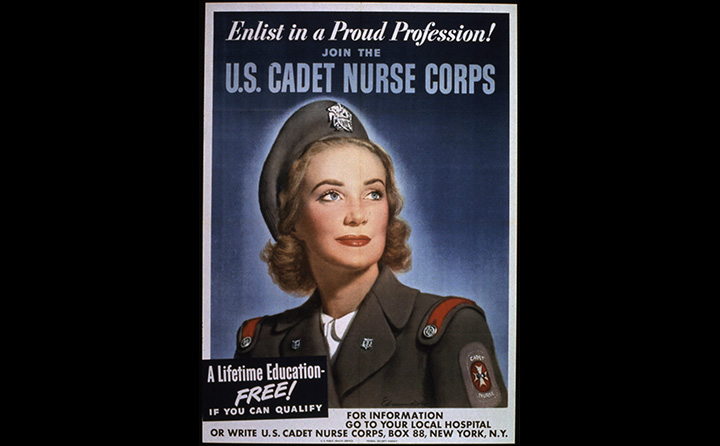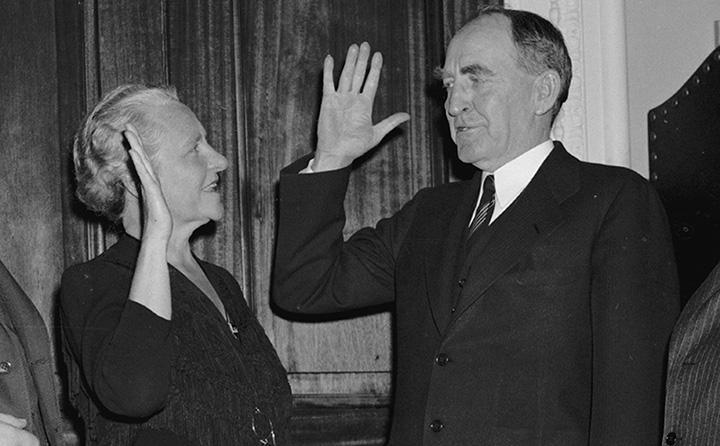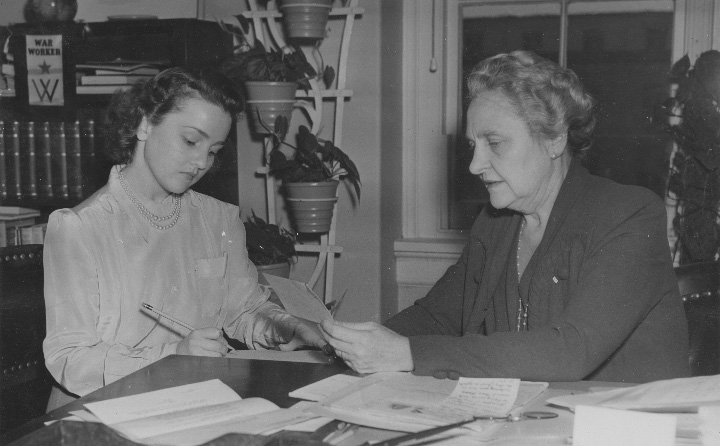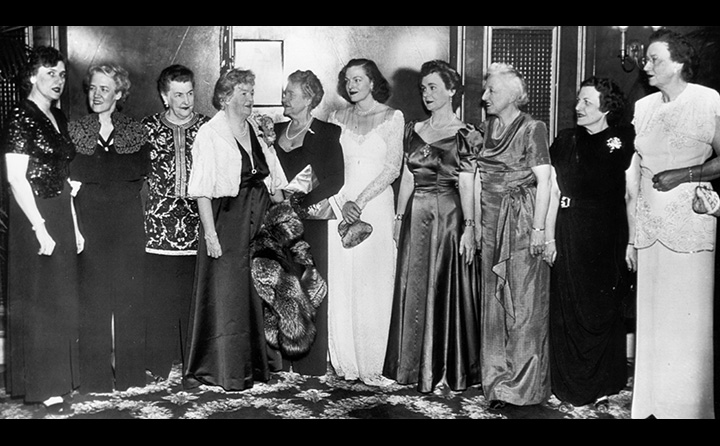Frances Payne Bolton
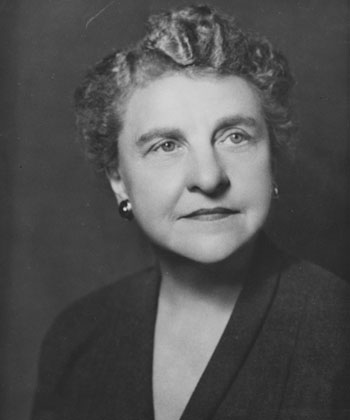
Served in the U.S. House of Representatives, 1940-69
Born: 1885 in Cleveland, Ohio
Died: 1977 in Lyndhurst, Ohio
Education: Attended private schools in the United States and France
Prior Experience: Member of the Ohio Republican State Central Committee from 1937 - 1940; Delegate to Republican National Conventions in 1956, 1960, 1964, and 1968; first woman appointed as congressional delegate to the United Nations General Assembly in 1953
Age When First Elected to the U.S. House: 54
Length of Service: 15 terms
How She Entered the U.S. House: Ran in special election in 1940 after the death of her husband
How She Exited the U.S. House: Defeated in 1968 general election after redistricting
Party: Republican
Background
While she was one of the wealthiest women in the United States, Frances Payne Bolton's family had a long history of public service. Her grandfather, Henry B. Payne, ran for president twice and served in the Ohio State Senate and the US Congress in the mid to late 1800s. Her husband, Chester Bolton, served in the Ohio State Senate and the US House. Frances was a popular spokes-person for her husband and loved being on the campaign trail, proclaiming, "Oh, it's a grand life!" (Loth, p. 168). During World War I, Frances inherited a trust fund created by her uncle, one of the founders of Standard Oil. After working with nurses in the tenements of Cleveland, she gave over $1 million to Western Reserve University to create a school of nursing, which is now the Case Western Reserve Frances Payne Bolton School of Nursing.
In October of 1939, after winning his 6th non-consecutive term in the House, Chester died, and Frances ran for his seat in the special election held in February, 1940. She explained that party leaders thought that asking her to run "would be a graceful gesture which would do them no harm since they were sure I would get tired of politics in a few months, and flit on to something else" (Loth, p. 193). Bolton won the election by a 2 to 1 margin. In the regularly scheduled general election later that year, she defeated former US House member Anthony Fleger with 57% of the vote. She said, "The men so much wanted to get me out that I determined they would have to put up with me" (Loth, p. 203).
As a member of Congress during WWII, she authored the Bolton Act, creating the US Cadet Nurse Corp, a training program that provided opportunities for women regardless of race at a time when the American military was still segregated. She later advocated that women should be included in the draft, explaining that, "Women's place includes defending the home" ("Bolton").
Her son, Oliver Bolton, was a House Member from 1953-57 and 1963-65, making Frances the only woman in the history of Congress to serve with her son. During her first term in the House, she was one of only 6 women. During her last term, almost 30 years later, the number of women in the House, including herself, had only increased to 10.
Ohio's 22nd District
Frances Bolton represented Ohio's 22nd district, which was centered around Cleveland and entirely within Cuyahoga County. Given her long career and the US Supreme Court's intervention in redistricting during her tenure, Bolton's district was redrawn several times. For her first 5 terms from 1940 to 1950, when malapportionment was constitutional, the 22nd district (shown here), while geographically compact, was the largest in the United States in terms of population, with over 900,000 people. In comparison, there were 3 other districts in Ohio that had fewer than 200,000 people (Loth, p. 210). Redistricting during the 1950s substantially changed her constituency, making it much more average in population size, which meant reducing the number of people by almost two-thirds (Loth, p. 262). In the wake of the US Supreme Court's decisions in the 1960s establishing that House districts must be of equal population, Bolton's district was redrawn again, now a fraction of its former geographic size, covering the northeastern part of Cuyahoga County (shown below in maps from The Historical Atlas of United States Congressional Districts, 1789-1983).
Election History
| Year | Democratic Opponent | Bolton's % of 2-Party Vote |
| 1940 | Anthony Fleger | 56.7% |
| 1942 | James Metzenbaum | 57.1% |
| 1944 | Don Cameron | 57.4% |
| 1946 | Earl Heffley | 71.7% |
| 1948 | Jack Day | 54.7% |
| 1950 | Chat Paterson | 62.7% |
| 1952 | Chat Paterson | 58.8% |
| 1954 | Chat Paterson | 58.3% |
| 1956 | Harry Blachman | 66.7% |
| 1958 | Chat Paterson | 55.3% |
| 1960 | Chat Paterson | 56.9% |
| 1962 | Edward Corrigan | 67.8% |
| 1964 | Chat Paterson | 56.6% |
| 1966 | Anthony Calabrese | 55.9% |
| 1968 | Charles Vanik | 45.3% |
District Maps
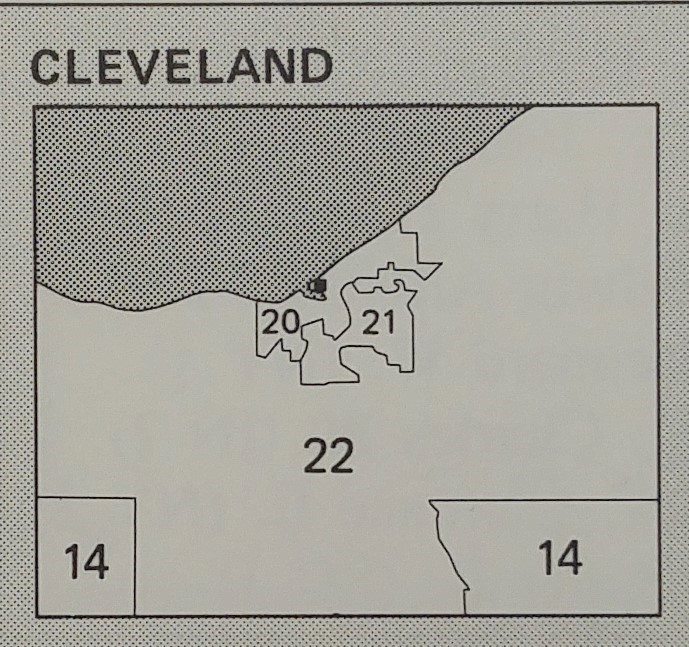
Ohio's 22nd District from 1940-50
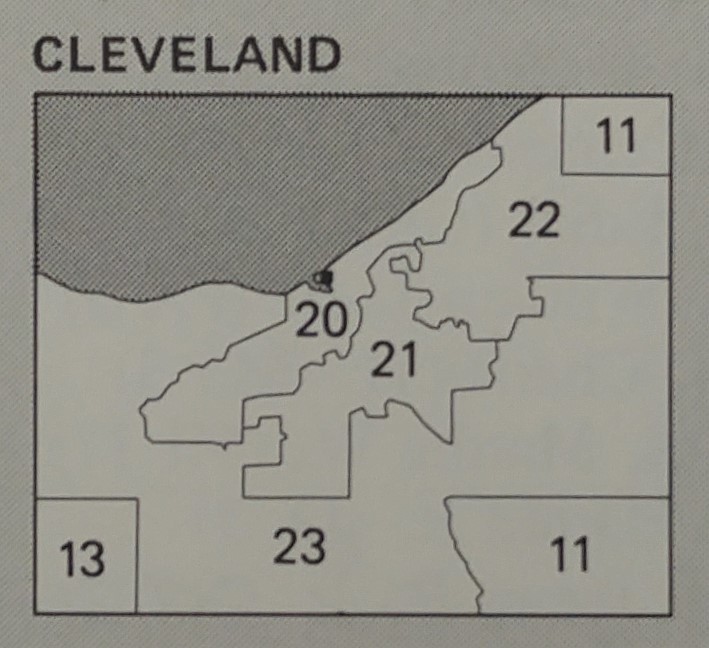
Ohio's 22nd District in 1968
![]() Sources
and
Resources:
Sources
and
Resources:
"Bolton, Frances Payne." Women in Congress, U. S. House of Representatives Office of the Clerk, http://history.house.gov/People/Detail/9566?ret=True
Foerstel, Karen. 1999. Biographical Dictionary of Congressional Women. Westport, CT: Greenwood Press.
Frances Payne Bingham Bolton Papers, 1939-1977. Western Reserve Historical Society.
Kaptur, Marcy. 1996. Women of Congress: A Twentieth Century Odyssey. Washington: Congressional Quarterly.
Loth, David. 1957. A Long Way Forward: The Biography of Congresswoman Frances P. Bolton. New York: Longmans, Green.


